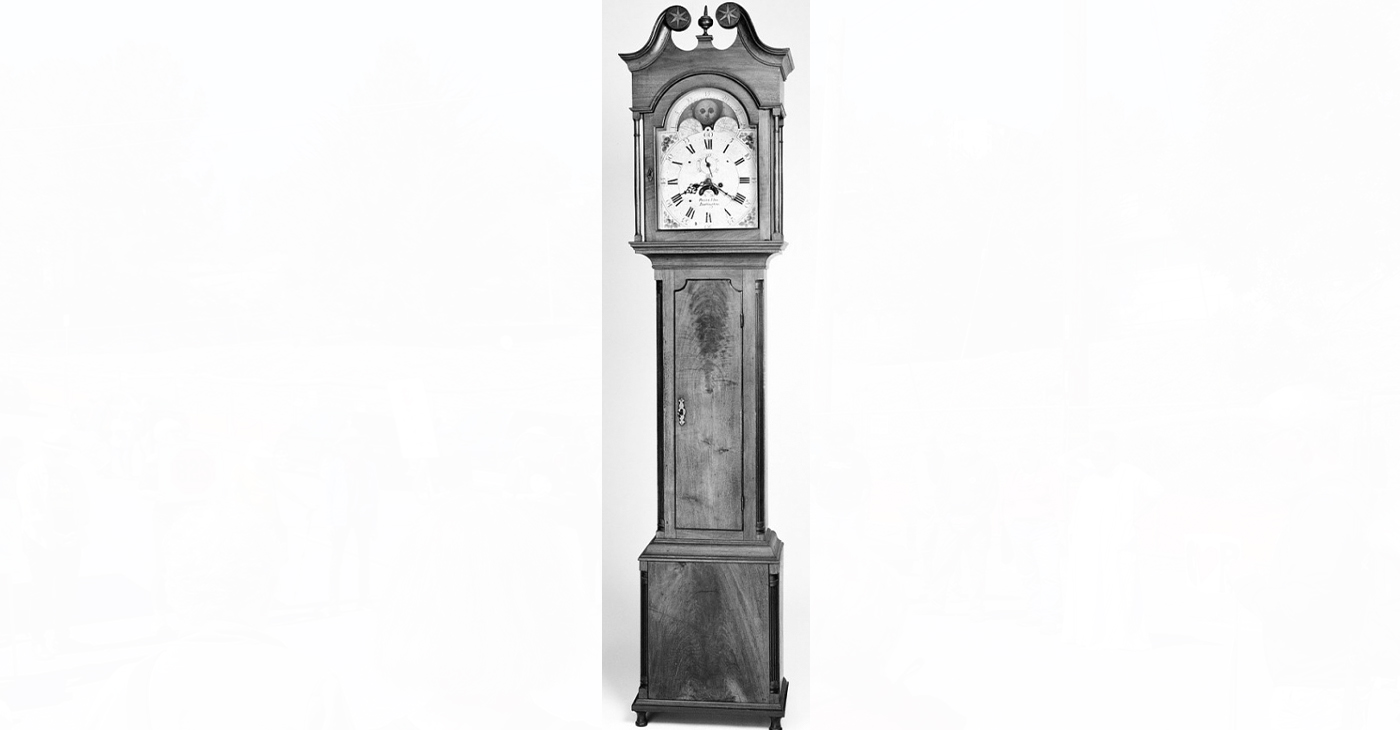Black History
Crafting Freedom and Time: The Life and Legacy of Clockmaker Peter Hill
Peter Hill, a skilled clockmaker, was born on July 19, 1767, in Burlington Township, New Jersey. Peter’s journey unfolded against the backdrop of both challenge and triumph.

By Tamara Shiloh
Peter Hill, a skilled clockmaker, was born on July 19, 1767, in Burlington Township, New Jersey. Peter’s journey unfolded against the backdrop of both challenge and triumph.
Hill’s lineage is thought to trace back to enslaved parents, owned by Joseph Hollinshead Jr., a clockmaker. A twist of fate had Peter growing up within the Hollinshead household, where he absorbed the intricate art and craft of clockmaking. As he matured, the hands of destiny guided him towards assisting Hollinshead in his clock store, honing his skills with each passing tick.
In 1794, at the age of 27, Hollinshead emancipated Hill from the chains of enslavement, and the subsequent year witnessed the official affirmation of his freedom through a court document. A momentous turning point, this marked the beginning of Hill’s journey as a free man.
A love story of significance unfolded when Peter Hill and Tina Lewis exchanged vows on Sept. 9, 1795. Tina, celebrated for her adept writing and her efforts in offering education to African Americans within the community through the Society of Friends (Quakers), brought her own radiant light to their shared path.
After marrying, he embarked on a new endeavor in 1795, crafting clocks and watches within his Burlington, New Jersey home. As his craftsmanship flourished, so did his success, prompting him to expand his horizons. Alongside timepieces, Peter’s legacy extended to the ownership of cattle, horses, and expansive plots of land.
By 1814, Peter relocated his clockmaking business to Mount Holly. There, he thrived within the Quaker farming community where his creations would succeed. It was amidst the hum of paper mills and iron works that Peter’s clocks found their place.
The passage of time bore witness to the endurance of Peter’s craft. Not one, but two of his timepieces survived the era. The first, created for neighbor Rowland Jones in 1812, found a new home at Westtown School in Westtown, Pennsylvania.
The second, a stately tall case clock, graced the halls of the National Museum of History and Technology at the Smithsonian Institute in Washington, D.C., a testimony to Hill’s enduring legacy.
On a notable date, Feb. 20, 1820, Peter Hill’s story took another turn as he acquired a brick dwelling house and land in Mount Holly. That same year, he passed away, leaving behind a legacy woven into every tick of time. Even after his passing, his influence, his craftsmanship, and the spirit of his journey continue to echo through the pages of history.
Activism
Oakland Post: Week of April 24 – 30, 2024
The printed Weekly Edition of the Oakland Post: Week of April 24 – 30, 2024

To enlarge your view of this issue, use the slider, magnifying glass icon or full page icon in the lower right corner of the browser window. ![]()
Activism
Oakland Post: Week of April 17 – 23, 2024
The printed Weekly Edition of the Oakland Post: Week of April 17 – 23, 2024

To enlarge your view of this issue, use the slider, magnifying glass icon or full page icon in the lower right corner of the browser window. ![]()
Black History
Matthew Henson: Explorer Extraordinaire
Matthew Henson, a trailblazing explorer who overcame countless obstacles to leave an incredible mark on history. Born on August 8, 1866, in Charles County, Maryland, his journey is a testament to the power of determination and the spirit of adventure.

By Tamara Shiloh
Matthew Henson, a trailblazing explorer who overcame countless obstacles to leave an incredible mark on history. Born on August 8, 1866, in Charles County, Maryland, his journey is a testament to the power of determination and the spirit of adventure.
Henson’s life began amidst the backdrop of post-Civil War America, where opportunities for African Americans were scarce. From a young age, he possessed an insatiable curiosity about the world beyond his small town. At the age of 12, he embarked on a journey that would change the course of his life forever when he joined a merchant ship as a cabin boy.
His most famous expedition was his journey to the Arctic with renowned explorer Robert E. Peary. In 1887, Henson joined Peary’s crew as a seaman and quickly proved himself to be invaluable with his skills as a navigator and craftsman. Over the course of several expeditions, Matthew endured extreme cold, treacherous terrain, and grueling conditions as he and Peary sought to reach the elusive North Pole.
In 1908–09, Peary set out on his eighth attempt to reach the North Pole. It was a big expedition, with Peary planning to leave supplies along the way. When he and Henson boarded their ship, the Roosevelt, leaving Greenland on August 18, 1909, they were joined by a large group. This included 22 Inuit men, 17 Inuit women, 10 children, 246 dogs, 70 tons of whale meat, blubber from 50 walruses, hunting gear, and tons of coal.
In February, Henson and Peary left their anchored ship at Ellesmere Island’s Cape Sheridan, along with the Inuit men and 130 dogs. They worked together to set up a trail and supplies along the way to the Pole.
Peary picked Henson and four Inuit people to join him in the final push to the Pole. However, before they reached their destination, Peary couldn’t walk anymore and had to ride in a dog sled. He sent Henson ahead to scout the way. In a later interview with a newspaper, Henson recalled being in the lead and realizing they had gone too far. The group turned back, and Henson noticed his footprints helped guide them to their destination. At that location, Henson planted the American flag.
Henson’s legacy extends far beyond his expeditions to the Arctic. He shattered racial barriers in the world of exploration and inspired countless individuals, regardless of race, to dream big and pursue their passions. In 1937, he was finally recognized for his achievements when he was inducted into The Explorers Club, an organization dedicated to promoting scientific exploration and field research.
Matthew Henson died in the Bronx, New York, on March 9, 1955, at the age of 88.
-

 Community2 weeks ago
Community2 weeks agoFinancial Assistance Bill for Descendants of Enslaved Persons to Help Them Purchase, Own, or Maintain a Home
-

 Activism3 weeks ago
Activism3 weeks agoOakland Post: Week of April 3 – 6, 2024
-

 Business2 weeks ago
Business2 weeks agoV.P. Kamala Harris: Americans With Criminal Records Will Soon Be Eligible for SBA Loans
-

 Activism2 weeks ago
Activism2 weeks agoOakland Post: Week of April 10 – 16, 2024
-

 Community2 weeks ago
Community2 weeks agoAG Bonta Says Oakland School Leaders Should Comply with State Laws to Avoid ‘Disparate Harm’ When Closing or Merging Schools
-

 Community1 week ago
Community1 week agoOakland WNBA Player to be Inducted Into Hall of Fame
-

 Community2 weeks ago
Community2 weeks agoThe Year Ahead: Assembly Speaker Rivas Discusses Priorities, Problems
-

 City Government2 weeks ago
City Government2 weeks agoLAO Releases Report on Racial and Ethnic Disparities in California Child Welfare System























































